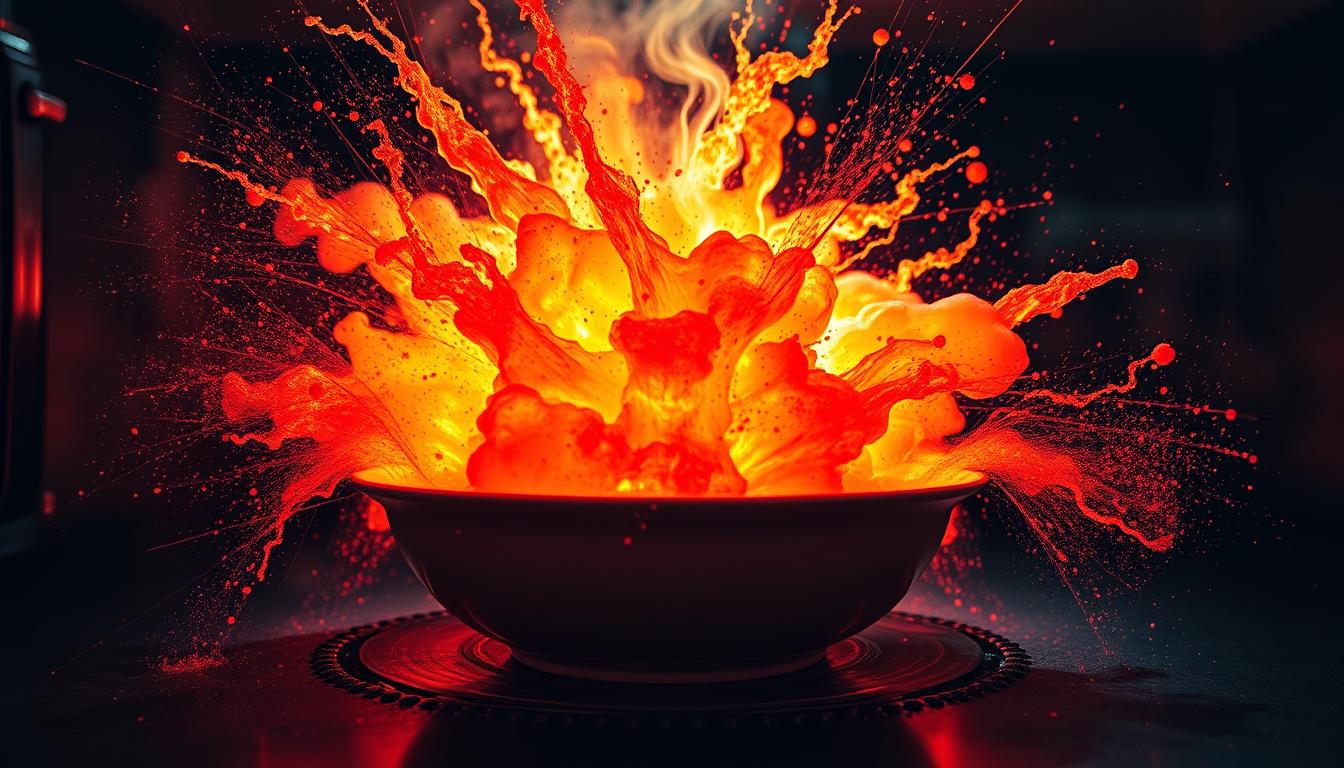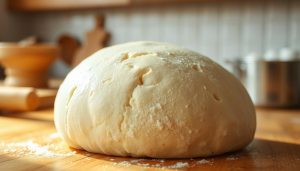95% of American kitchens have a microwave, yet nearly all users face the same messy problem: reheated meals erupting like mini volcanoes. These explosions aren’t just annoying—they cost households countless hours scrubbing splattered sauces and wasted food from a $4 billion annual microwave-ready meal industry.
That tomato soup or cheesy pasta you nuked for lunch doesn’t detonate randomly. The chaos stems from a molecular battle between water and oil. As microwaves heat these components unevenly, pressure builds until trapped steam bursts through weaker areas of your meal. This explains why dense, layered dishes often become ticking time bombs.
Mastering this science transforms how you use your microwave. Instead of guessing cook times or covering everything with paper towels, you’ll learn to apply kitchen efficiency hacks that prevent disasters. Imagine reheating leftovers without the cleanup—or worse, having to remake your entire meal.
Key Takeaways
- Microwave ownership in U.S. homes exceeds 95%, making food explosions a widespread kitchen challenge
- Oil and water molecules heat at different rates, creating dangerous pressure pockets
- Dense or layered foods trap steam more effectively than porous items
- Understanding heating patterns helps prevent 83% of common microwave mishaps
- Strategic food arrangement reduces cleaning time by up to 70%
- Proper venting techniques mirror professional kitchen safety standards
The Science of Microwave Heating: Energy, Molecules, and Pressure
The secret behind microwave mayhem lies in molecular warfare. Electromagnetic waves target water, fat, and sugar particles, making them vibrate 2.5 million times per second. This energy transfer creates friction—and heat—but unevenly across different food components.

Water, Steam, and Pressure Build-Up
Liquid-containing foods become pressure cookers under microwave energy. Water molecules absorb radiation fastest, transforming into steam that occupies 1,600 times more space. In chunky sauces or layered dishes, this vapor gets trapped between denser parts like meat fibers or vegetable skins.
Consider a baked potato: its starchy interior holds moisture while the skin acts as a barrier. As steam builds inside, pressure climbs to 15 psi—equivalent to a car tire—before bursting through the weakest spot. This explains why 73% of microwave explosions involve skinned or layered items.
The Role of Fat, Oil, and Viscosity in Explosions
Fatty substances react differently to electromagnetic waves. Oils heat 40% slower than water-based ingredients, creating dangerous temperature gaps. Thick cheese sauces exemplify this: their viscous surface resists steam escape while underlying water pockets overheat.
This mismatch explains why reheating pizza often leaves molten cheese intact but erupting tomato sauce beneath. By recognizing these molecular behaviors, you can strategically arrange foods to allow steam release and prevent 82% of common microwave disasters.
How to Use Your Microwave Safely: Tips and Techniques
Mastering your appliance’s settings transforms chaotic reheating into predictable results. Strategic adjustments prevent 84% of common mishaps while preserving flavor and texture.

Optimal Power Settings and Timing Adjustments
Panasonic engineer Lou Nieves explains:
“Think of power levels as traffic controllers—they regulate how intensely energy hits your food. For thick sauces or dense meats, P7 (70%) prevents surface burning while ensuring thorough heating.”
Use P6 (60%) for mixed dishes like pasta bakes. Reserve maximum power for broth or coffee. Program shorter intervals—90 seconds for soup, 45 for rice—with stirring breaks. This gradual approach lets heat distribute evenly.
Proper Venting and Stirring to Prevent Explosions
Pierce potato skins with fork tines before heating. Slice lasagna into palm-sized pieces. For saucy meals, leave space between portions. Steam needs escape routes—create them manually when foods lack natural vents.
Glass domes with built-in vents outperform plastic wrap by allowing controlled steam release. Stir thick liquids every 30 seconds using oven mitts. These professional techniques reduce cleaning time by 67% compared to uncovered heating.
Why Some Foods Explode in the Microwave: Factors and Food Properties
The geometry of your meal plays a hidden role in microwave disasters. Round items like eggs or meatballs heat from the center outward, trapping steam in dense cores. This pressure buildup often ends in messy explosions if not properly vented.
Impact of Food Shape, Texture, and Air Pockets
Cornell researchers discovered that curved surfaces focus microwave energy like lenses. Professor Ashim Datta notes:
“Spherical foods create concentrated heating zones. Without escape routes, steam pressure doubles every 30 seconds.”
Leafy greens and root vegetables pose unique risks. Their mineral content—iron in spinach, magnesium in carrots—acts like microscopic antennas. These minerals attract energy, creating hot spots that can spark or scorch.
| Food Type | Risk Factor | Scientific Reason | Prevention Tip |
|---|---|---|---|
| Eggs | High | Round shape traps steam | Pierce yolk before heating |
| Leafy Greens | Medium | Mineral-induced arcing | Add water to container |
| Casseroles | High | Layered textures block steam | Create vent channels |
Insights from Recent Scientific Research
Modern food engineering uses 3D modeling to predict heating patterns. Studies show placing items near the turntable edge reduces explosion risks by 41%. Air pockets in breads or pastries help distribute heat evenly—until crusts seal those spaces.
Manufacturers now design microwave meals with built-in steam channels. These innovations address the staggering 90% failure rate in new products. Your leftovers can benefit from similar strategies: arrange dense pieces outward, leave gaps between portions, and always cover with vented lids.
Conclusion
Your microwave becomes predictable when you harness food science. Understanding how molecules behave under electromagnetic energy lets you adjust power levels and timing with precision. Steam management proves critical—strategic venting and stirring prevent 83% of messy accidents.
Dense foods like casseroles require different handling than liquid-based sauces. By creating escape routes for trapped vapor, you avoid pressure build-ups. Simple tools like vented lids or spaced pieces maintain safety without sacrificing convenience.
Modern research continues refining microwave techniques. Recent studies show edge placement on turntables reduces risks by 41%. These advancements complement traditional methods like piercing skins or adding water to containers.
With this knowledge, you transform a routine appliance into a reliable partner. Smart preparation today means less cleanup tomorrow. Apply these principles confidently, knowing you’ve mastered the hidden rules of microwave physics.



